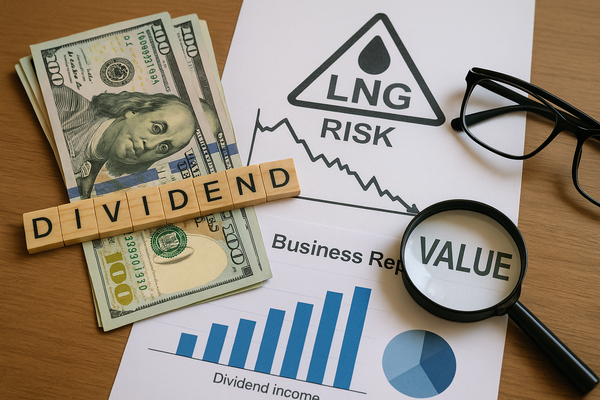
Today matters because monetary policy and income strategies are aligning to reshape capital allocation. The Federal Reserve has just cut rates, putting yield-hunting back on the front burner. At the same time, concentrated dividend positions and corporate moves are changing how investors harvest cash flow. And global gas dynamics, from Power of Siberia 2 to U.S. export economics, are testing the growth stories of a major liquefaction player.
The big three headlines
Three items dominate the read-through for active investors. First, a portfolio-focused piece notes that three dividend names supply 44% of one investor’s income. That statistic highlights the power of concentration for yield-focused outcomes. Second, Cenovus Energy (CVE) is pitched as a buy on the back of acquisitions and rising payouts. The recommendation centres on operational scale and an improving free cash flow profile that can support dividend increases. Third, Enbridge-linked commentary frames a portfolio of instruments yielding between 3% and 13% as beneficiaries of the Fed’s rate move. Finally, Cheniere Energy (LNG) is treated with caution: analysts call it a hold because of soft LNG prices and elevated debt levels, even while acknowledging long-term export capacity growth and structural demand from projects like Power of Siberia 2.
Sector pulse
Two macro currents set the pulse. Lower policy rates compress short-term returns on cash instruments. That pushes professional buyers toward dividend-paying equities and stable pipeline cash flows. The result is renewed appetite for concentration where yield is predictable. The second current is commodity-specific. LNG markets remain volatile. Spot prices are soft now and that pressure shows up in cash flow forecasts for exporters with leverage. Meanwhile, geopolitical pipeline projects in Eurasia add nuance to supply assumptions. Together, these forces reward balance sheets and operational scale over growth funded by heavy debt.
Winners & laggards
CNQ (symbol flagged in the dividend piece) stands out as a core income resident in concentrated portfolios. The 44% figure signals that some investors treat it like a cornerstone. Opportunity: steady production and dividend lift can compound income. Risk: commodity swings and any payout cuts would hit distributions hard for concentrated holders.
CVE is presented as a buy. Opportunity: recent acquisitions and management’s intent to increase dividends create upside for total return buyers. The valuation case hinges on execution. Risk: integration costs, oil-price sensitivity, and cyclical cash flow could derail dividend momentum if crude weakens.
ENB benefits from the yield reallocation that follows a Fed cut. Pipelines and regulated assets often offer stable cash flows that fit a 3–13% yield target. Opportunity: distribution reliability and index-friendly status. Risk: regulatory resets, capex overruns, and permit delays can pressure payout coverage and share performance.
LNG (Cheniere Energy) is the clear laggard in tone. The holding recommendation reflects two realities. One, soft spot prices are compressing near-term margins. Two, leverage is non-trivial and raises refinancing and rating risks. Opportunity: long-term export capacity and contract wins could re-rate the stock if spot strength returns. Risk: persistent oversupply or weaker Asian demand could pin earnings below expectations for multiple quarters.
What smart money is watching next
- Dividend and payout announcements from major Canadian producers and integrated names. Investors will parse not only headline yields but payout coverage and reinvestment plans.
- Short-term LNG market indicators. Watch Henry Hub, JKM/Asian spot differentials, and U.S. export volumes. Any move that tightens spreads will materially improve exporter cash flows.
- Fed commentary and liquidity signals. If rate cuts continue to lower safe returns, capital flows to dividend-rich equities and infrastructure utilities will likely increase.
Closing take-away
After a Fed rate cut, income matters again. Concentrated dividend positions and large-scale operators with clean balance sheets look best positioned. Treat exporters with leverage cautiously until spot LNG strength and debt metrics both improve.












